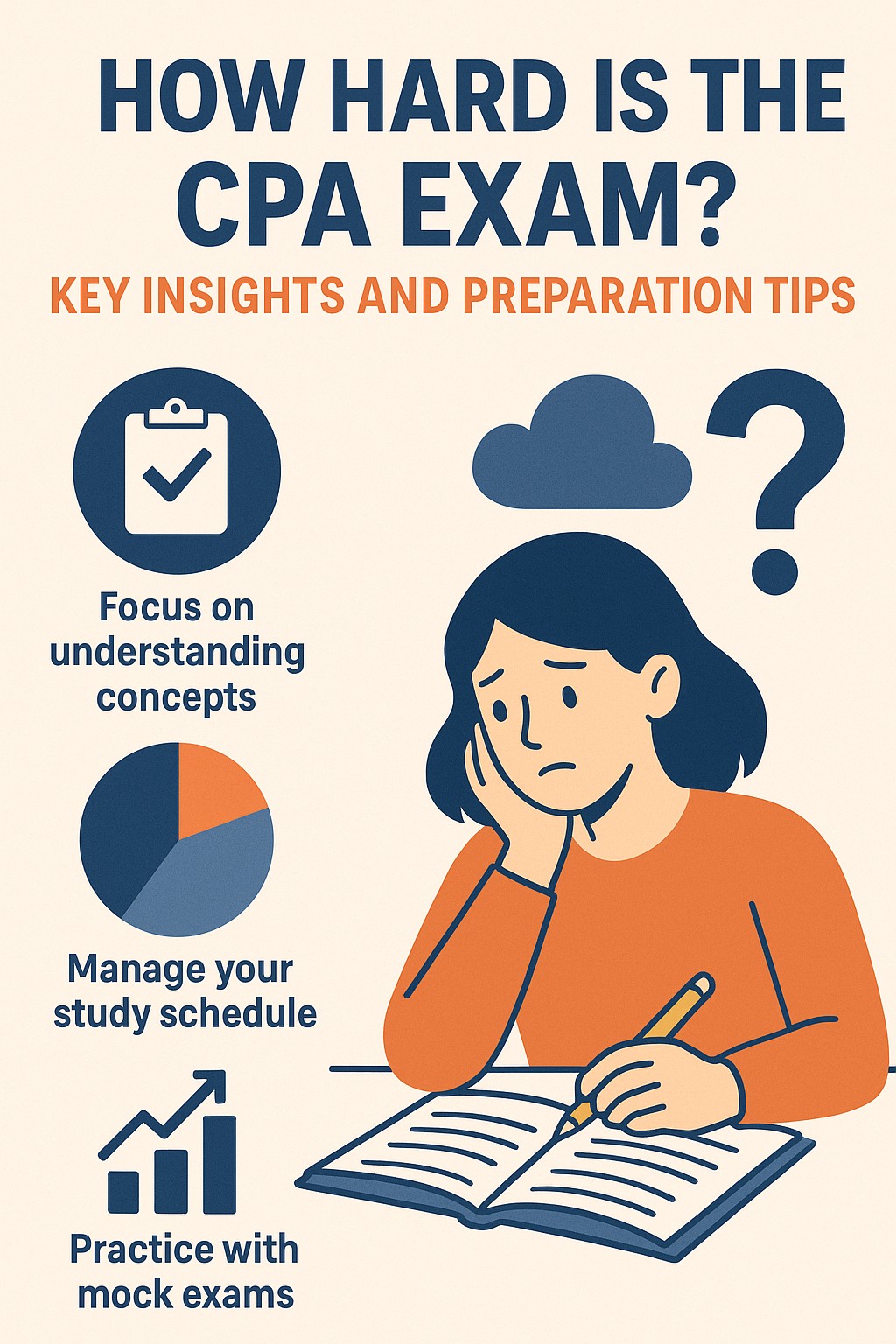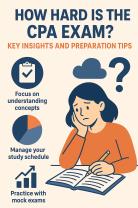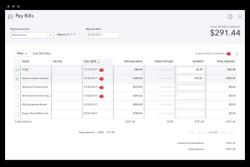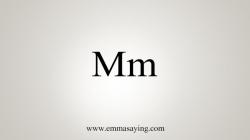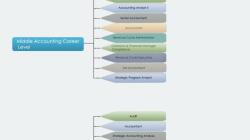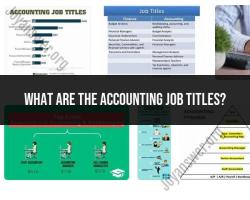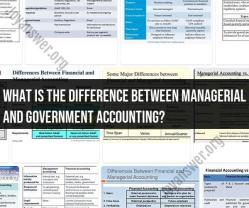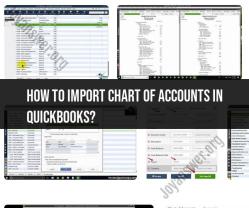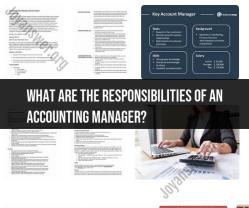How difficult is the CPA exam?
I. Executive Summary: The Strategic Imperative of CPA Licensure
The Uniform Certified Public Accountant (CPA) Examination stands as one of the most rigorous and challenging professional credentialing examinations globally.
A. Overall Difficulty Assessment: The Threshold of Competency
The examination’s intrinsic difficulty is evidenced by its persistently challenging performance metrics. The cumulative average pass rate for all sections typically fluctuates between 45% and 60%, indicating that approximately half of the candidates fail any given section on their first attempt.
B. Key Analysis: Passing as a Measure of Application, Not Just Knowledge
The most significant driver of the CPA Examination's rigor, particularly under the modified 2024 CPA Evolution structure, is the requirement to demonstrate high-order cognitive skills rather than merely recalling information. The examination gauges professional readiness by testing Application, Analysis, and, in the case of Auditing, the highest skill level, Evaluation.
An analysis of candidate performance confirms that rote memorization is insufficient for success. Sections that place the highest emphasis on application and analysis skills, such as Financial Accounting and Reporting (FAR) and Business Analysis and Reporting (BAR), exhibit the lowest pass rates.
C. Snapshot of the 2024 CPA Evolution Model
Launched in January 2024, the CPA Evolution initiative transformed the licensure structure to reflect the growing demands of technology and data within the profession.
Core Sections (Required): Auditing and Attestation (AUD), Financial Accounting and Reporting (FAR), and Taxation and Regulation (REG).
Discipline Sections (Choose One): Business Analysis and Reporting (BAR), Information Systems and Controls (ISC), or Tax Compliance and Planning (TCP).
II. Definitional Difficulty: Understanding the CPA Exam Challenge
The Uniform CPA Examination’s demanding nature is a function of its broad content coverage, rigorous structural mechanics, and the enormous temporal commitment it demands of candidates.
A. Quantifying the Difficulty and Commitment
Achieving CPA licensure demands a substantial investment of time, often extending over many months of intensive, dedicated study.
The time investment per section is considerable, ranging from 80 to 120 hours for most parts.
B. Intrinsic Factors Contributing to Exam Rigor
1. Vast and Heterogeneous Content Scope
The comprehensive nature of the exam is a primary factor contributing to its difficulty.
2. Multifaceted Question Formats and Scaled Scoring
Each 4-hour examination section incorporates a variety of question types, specifically Multiple-Choice Questions (MCQs) and Task-Based Simulations (TBSs).
For MCQs, the examination historically used a multi-stage adaptive test delivery model (MST) where questions were matched to the candidate’s perceived proficiency level.
3. Critical Role of Task-Based Simulations (TBSs)
Task-Based Simulations are complex, scenario-based case studies designed to replicate real-world professional judgment challenges.
C. Comparative Difficulty Analysis
To accurately gauge the rigor of the CPA Examination, it is useful to benchmark it against other major professional certifications:
CPA vs. Certified Management Accountant (CMA): The CPA examination is considered substantially more challenging than the CMA examination.
CPA vs. Enrolled Agent (EA): Professionals who have completed both certifications characterize the CPA as exponentially more difficult than the EA.
CPA vs. Chartered Financial Analyst (CFA): While both certifications demand extensive study and commitment, some professionals who hold both credentials cite CFA Level 2 as significantly more difficult in terms of analytical and mathematical depth.
III. The Structure of the Modern CPA Examination (CPA Evolution 2024)
The CPA Evolution model requires candidates to pass four distinct 4-hour sections—three Core sections and one Discipline section.
A. The Foundational Core: Three Mandatory Sections
All candidates must demonstrate competency in the three Core sections, which cover the most critical, globally applicable aspects of public accounting.
1. Financial Accounting and Reporting (FAR)
FAR is traditionally the most feared section due to its vast scope.
2. Auditing and Attestation (AUD)
The AUD section covers professional ethics, the process of risk assessment, developing planned responses, executing further procedures to obtain evidence, and ultimately forming and reporting conclusions.
3. Taxation and Regulation (REG)
REG tests a candidate’s grasp of U.S. federal taxation for individuals and entities, U.S. business law concepts, and the ethical and professional responsibilities related to tax practice.
B. The Specialized Discipline: Candidate Choice
The Discipline sections allow candidates to choose a specialization, although the choice does not limit their subsequent CPA practice privileges.
1. Business Analysis and Reporting (BAR)
BAR focuses on technical accounting topics, financial analysis, risk management, data usage in decision-making, and specialized State and Local Government (SLG) accounting.
2. Information Systems and Controls (ISC)
ISC emphasizes data management, information systems, security, confidentiality, privacy, and considerations for System and Organization Controls (SOC) engagements.
3. Tax Compliance and Planning (TCP)
TCP tests advanced topics beyond the scope of REG, covering complex tax compliance and planning for individuals, entities, personal financial planning, and property transactions.
C. CPA Evolution Exam Structure and Skill Weighting
The table below summarizes the quantitative structure of the examination sections, emphasizing the skill levels assessed, which directly dictates the type of preparation required.
CPA Evolution Exam Structure and Scoring (Post-2024)
| Section | Type | MCQ Weight (%) | TBS Weight (%) | Primary Skill Tested (Highest Weight) |
| FAR | Core | 50% | 50% | Application (45-55%) |
| AUD | Core | 50% | 50% | Remembering & Understanding/Application (30-40%) |
| REG | Core | 50% | 50% | Application (35-45%) |
| BAR | Discipline | 50% | 50% | Application (45-55%) |
| ISC | Discipline | 60% | 40% | Remembering & Understanding (55-65%) |
| TCP | Discipline | 50% | 50% | Application (55-65%) |
IV. Data-Driven Difficulty Analysis: Pass Rates and Content Depth
A. Analysis of Recent Pass Rates (2024-2025)
Examination performance data confirms that difficulty is highly sectionalized, primarily driven by the required cognitive skills and the complexity of the content domain.
The data indicates that FAR and BAR are statistically the most difficult sections. The cumulative 2024 pass rate for FAR was 39.59%, and early 2025 results show a continued low trend around 42%.
B. CPA Exam Pass Rates and Relative Difficulty Ranking
The following table presents a clear ranking of difficulty based on reported performance data under the CPA Evolution model.
CPA Exam Pass Rates and Relative Difficulty Ranking (2024-2025 YTD)
| Section | 2024 Cumulative Pass Rate | 2025 YTD Cumulative Pass Rate | Relative Difficulty Rank (1=Hardest) | Key Difficulty Driver |
| BAR (Business Analysis and Reporting) | 38.08% | 43.32% | 1 | Technical complexity, high Application/Analysis skills |
| FAR (Financial Accounting and Reporting) | 39.59% | 42.66% | 2 | Content breadth (GAAP, GASB, NFP), complex topics |
| AUD (Auditing and Attestation) | 45.79% | 46.92% | 3 | Judgment required (Evaluation), risk assessment |
| ISC (Information Systems and Controls) | 58.00% | 68.69% | 4 | Framework recall, high MCQ weighting (60%) |
| REG (Regulation) | 62.61% | 62.89% | 5 | Focused application of law and tax code |
| TCP (Tax Compliance and Planning) | 73.91% | 78.57% | 6 (Easiest) | Highly specialized content, strong candidate preparedness |
C. Deep Dive: The Causal Factors Behind FAR and BAR Difficulty
The statistical challenge presented by FAR and BAR is intrinsically linked. The Business Analysis and Reporting (BAR) Discipline covers complex technical accounting and reporting concepts that are fundamentally extensions of the knowledge base established in FAR.
In terms of volume, FAR requires coverage of the broadest range of topics, including complex specialized areas like Governmental Accounting (GASB standards), Leases, Pensions, Deferred Taxes, and Business Combinations.
The necessary cognitive engagement is exceptionally high for both sections. BAR, for instance, dedicates approximately 85% of its assessment weight to Application and Analysis skills.
V. Strategic Preparation: Maximizing the 18-Month Window
The rigorous nature of the CPA Examination necessitates a highly structured and disciplined approach to preparation, specifically tailored to the temporal constraints imposed by the 18-month credit window.
A. Required Time Commitment and Consistency
The total study commitment spanning 320 to 500 hours requires sustained effort over many months.
Recommended Study Hour Allocation per CPA Exam Section
| CPA Exam Section | Core/Discipline | Recommended Study Hours (Range) | Source Reference |
| Financial Accounting and Reporting (FAR) | Core | 120 – 190 hours | |
| Business Analysis and Reporting (BAR) | Discipline | 90 – 120 hours | |
| Regulation (REG) | Core | 80 – 120 hours | |
| Auditing and Attestation (AUD) | Core | 70 – 110 hours | |
| Information Systems and Controls (ISC) | Discipline | 80 – 100 hours | |
| Tax Compliance and Planning (TCP) | Discipline | 80 – 100 hours |
B. Optimal Section Sequencing and 18-Month Strategy
The 18-month rolling credit rule is the defining administrative constraint of the CPA journey.
A prevalent and effective strategy is the "hardest first" approach, which advocates taking the most difficult section, typically FAR or BAR, as the initial test.
The choice of Discipline section serves as a mechanism for risk management within the 18-month window. If a candidate is aiming for maximum efficiency and speed, selecting the Discipline section with the highest statistical likelihood of success minimizes the probability of a failure that could compromise the credit earned on previously passed Core sections (like FAR).
C. Preparation Tactics for the Working Professional
Many candidates undertake the CPA exam while maintaining full-time employment, requiring additional strategic planning.
Mindset and Time Allocation: Cultivating discipline and a resilient mindset is essential, as the data confirms that many candidates fail at least one section on the first try.
Leveraging Experience and Resources: Candidates should utilize their professional experience to their advantage; for example, working in an audit capacity can significantly reinforce understanding of the AUD section material.
VI. Tactical Mastery: Conquering Task-Based Simulations (TBSs) and Test Mechanics
A. The Centrality of Task-Based Simulations
Task-Based Simulations are the primary element differentiating the CPA Exam from simpler credentialing tests.
B. Strategies for TBS Success
Success on TBSs requires moving preparation beyond simple recognition of correct answers to deep, contextualized application of accounting principles.
Prioritize Deep Conceptual Understanding: Successful candidates emphasize focusing on the underlying concepts and understanding the causal relationship (the "why") behind the rules, enabling them to solve problems from multiple perspectives.
Simulation Practice and Pacing: Candidates must practice a variety of simulations under timed, exam-like conditions to improve pacing and familiarize themselves with the testing software.
Mastering Authoritative Literature (AL): Candidates must practice using the Authoritative Literature function, particularly for research-based TBSs.
Maximize Partial Credit: The CPA Exam does not impose a penalty for incorrect answers.
C. Understanding Test Mechanics and Scoring
The examination’s scoring framework is standardized and weighted to ensure that a score of 75 reflects a consistent standard of competency over time.
VII. Pitfalls, Preparation Investment, and Financial Reality
A. Top Reasons for Failing the CPA Exam
The low cumulative pass rates demonstrate that failure is common, yet often preventable through strategic adjustments. Only about 20% of candidates successfully pass all four sections on the first attempt.
Underestimation of Exam Difficulty: Failing to acknowledge the technical rigor and content breadth leads many candidates to allocate insufficient study time.
Insufficient Study Time: Not meeting the 300-500 hour threshold typically results in surface-level recognition of concepts, which is insufficient for the Application and Analysis demands of the exam.
Inefficient Study Methods: Passive studying (reading and listening) without engaging in active recall via practice questions and complex simulations leads to poor retention and application skills.
Incorrect Time Management: Poor pacing during the examination, often resulting in spending too much time on MCQs and insufficient time on the high-value TBSs, is a critical issue that leads to low scores.
Internal Barriers: Succumbing to the pressure, intimidation, or lack of sustained motivation required for this demanding credentialing process.
B. The Financial Investment
The journey to CPA licensure represents a significant financial commitment. The total cost is composed of non-negotiable exam fees and the essential investment in high-quality preparation materials.
Mandatory Examination Fees: The examination fees are state-dependent but are standardized by NASBA for many jurisdictions. The fee for all four sections on the first attempt is approximately $1,379.20 ($344.80 per section).
Review Course Investment: Given the necessity of structured, high-volume practice, comprehensive CPA review courses are considered essential for success.
The estimated total initial investment, assuming a first-time pass on all sections, is approximately $3,779 to over $6,500.
Estimated Total Financial Cost for CPA Examination (Approximate Range)
| Cost Component | Estimated Price Range (One-Time) | Source Reference |
| Exam Section Fees (4 parts, First attempt) | $1,379 – $1,500 | |
| Application and Registration Fees (State dependent) | $150 – $500 | |
| CPA Review Course (Premium/Unlimited Access) | $2,000 – $4,000+ | |
| Ethics Exam and Initial Licensure Fees | $250 – $500 | |
| Total Estimated Investment (First Attempt) | $3,779 – $6,500+ |
The calculated total estimated investment represents the minimum required for a successful candidate. Given the statistical reality that approximately half of the attempts result in failure
VIII. Conclusion and Final Recommendations
The Uniform CPA Examination is an exceptionally challenging professional assessment defined by the breadth of its technical scope, the high cognitive skill levels it demands, and the compressed 18-month timeline for completion. The difficulty is not merely theoretical; it is quantified by the historically low pass rates, particularly in the Application-heavy sections like FAR and BAR.
A. Synthesis of Difficulty Factors
The CPA examination’s rigor is a convergence of three interconnected vectors:
Vast Scope: Requiring mastery across heterogeneous domains including technical financial accounting, complex tax code, auditing standards, and information technology.
High Skill Requirement: Testing the ability to apply, analyze, and evaluate complex scenarios, particularly within Task-Based Simulations (50% score weight).
Temporal Constraint: The unforgiving 18-month rolling credit window, which magnifies the cost and risk associated with strategic planning errors or retakes.
B. Roadmap for Success
Based on analysis of candidate performance and examination structure, the following prescriptive guidance is offered to maximize efficiency and the probability of first-attempt success:
Commitment Quantification: Commit a mandatory 320 to 500 total hours to study, maintaining a consistent weekly schedule tailored to the demanding sections like FAR.
Strategic Sequencing: Initiate the testing process by tackling the most challenging material first (FAR or BAR) to ensure the 18-month credit window starts after the most formidable obstacle has been overcome.
Discipline Selection as Risk Mitigation: Select the Discipline section based not only on career specialization but also on risk mitigation. The Tax Compliance and Planning (TCP) Discipline, with its high pass rates (over 75%), provides the most statistically reliable route to securing the final credit and completing the examination within the strict 18-month mandate.
Prioritize Application and Simulations: Allocate significant study time to Task-Based Simulations, understanding that the capacity to apply concepts, use authoritative literature, and manage time effectively during these complex scenarios is the primary determinant of passing (50% score weight).
Utilize Adaptive Technology: Leverage comprehensive review courses that utilize adaptive learning technologies to ensure that study efforts are focused precisely on weak areas and high-difficulty concepts, thereby maximizing the return on the substantial time and financial investment required.
